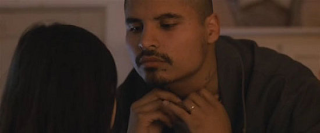Not Rated
I have always had a love affair with the Academy Awards but at the end of 2010 I realized how few of the Best Picture winners I’d actually seen. So I made it a goal to see all [then] 83 winners and write my thoughts about them along the way. (I even re-watched the ones I'd already seen so I could write a fresh post.)
That was the initial inspiration behind this blog... I wanted to document my thoughts as well as start a potential conversation or at least ask some thought-provoking questions. Why did it win? Should another movie have won instead? Has it become a beloved classic or do many of you not even recognize the title? For each film, I post the original movie poster, a brief synopsis, the films it was up against, my favorite scene(s), and any lessons I learned.
I have since completed the challenge and have seen all of the Academy's Best Picture winners. (For my collective thoughts at the end of the challenge, including lists of my favorites and least favorites, check out this post.) I keep this blog up-to-date by coming back each year to post my thoughts on the recent winner. I still invite you, my friends and guests, to comment along with me. Do you agree/disagree?
And the Oscar goes to…
Monday, December 31, 2012
The Greatest Show on Earth, 1952
Not Rated
Thursday, December 27, 2012
Ordinary People, 1980
I can't say I enjoyed this film but it was interesting. It depicts the heart-wrenching story of an upper-class suburban family who is dealing with grief, each member in his/her own way. I figured this film was based on a novel because there were inner dialogues. It’s difficult to translate what is known as “third-person voice” to the screen otherwise. I was right- this best-selling novel came out in 1976.
Tuesday, December 4, 2012
The Great Ziegfeld, 1936
Not Rated
I’ll admit I was thrilled to see this film as soon as I heard what it was about… This biopic is about Florenz Ziegfeld, or “Ziggy”, who became one of the most famous names in showbiz. The film reveals to us how he came from lowly beginnings to create what he’s known for: his “Follies” and their elaborate costumes and productions. He basically created the American chorus girl and put on the most extravagant creations on stage. At his death, a friend said to him, “You’ll leave them with the memories of the finest things ever done on the stage”; I only wish more people recognized his name. I “know” him as the man who hired Jewish comedienne Fanny Brice (played brilliantly by Barbra Streisand) in one of my favorite movies of all time, “Funny Girl”. I was eager to see his story (especially when I read the real Fanny Brice starred in it) and even more excited to see it with my mom who was visiting, since she was with me when I first saw “Funny Girl”.
Tuesday, October 30, 2012
Crash, 2005
Monday, October 29, 2012
Schindler's List, 1993
I think Bjork’s version adds a certain je ne sais quoi: http://www.youtube.com/watch?v=TCEJtUNe90A
Sunday, October 28, 2012
Dances with Wolves, 1990
Rated PG-13
Friday, September 21, 2012
Rocky, 1976
Rated PG
Monday, July 30, 2012
You Can't Take it with You, 1938
Not Rated
LESSONS LEARNED:
Friday, July 13, 2012
Gandhi, 1982
Rated PG (may be a little lenient)
Sunday, June 17, 2012
A Man for All Seasons, 1966
Rated G
The last ten minutes of the film kept me pretty focused. Sir Thomas More was finally given a “trial”. He was found guilty of treason and executed. The dialogue that happened at the very end was perfectly poignant:

































